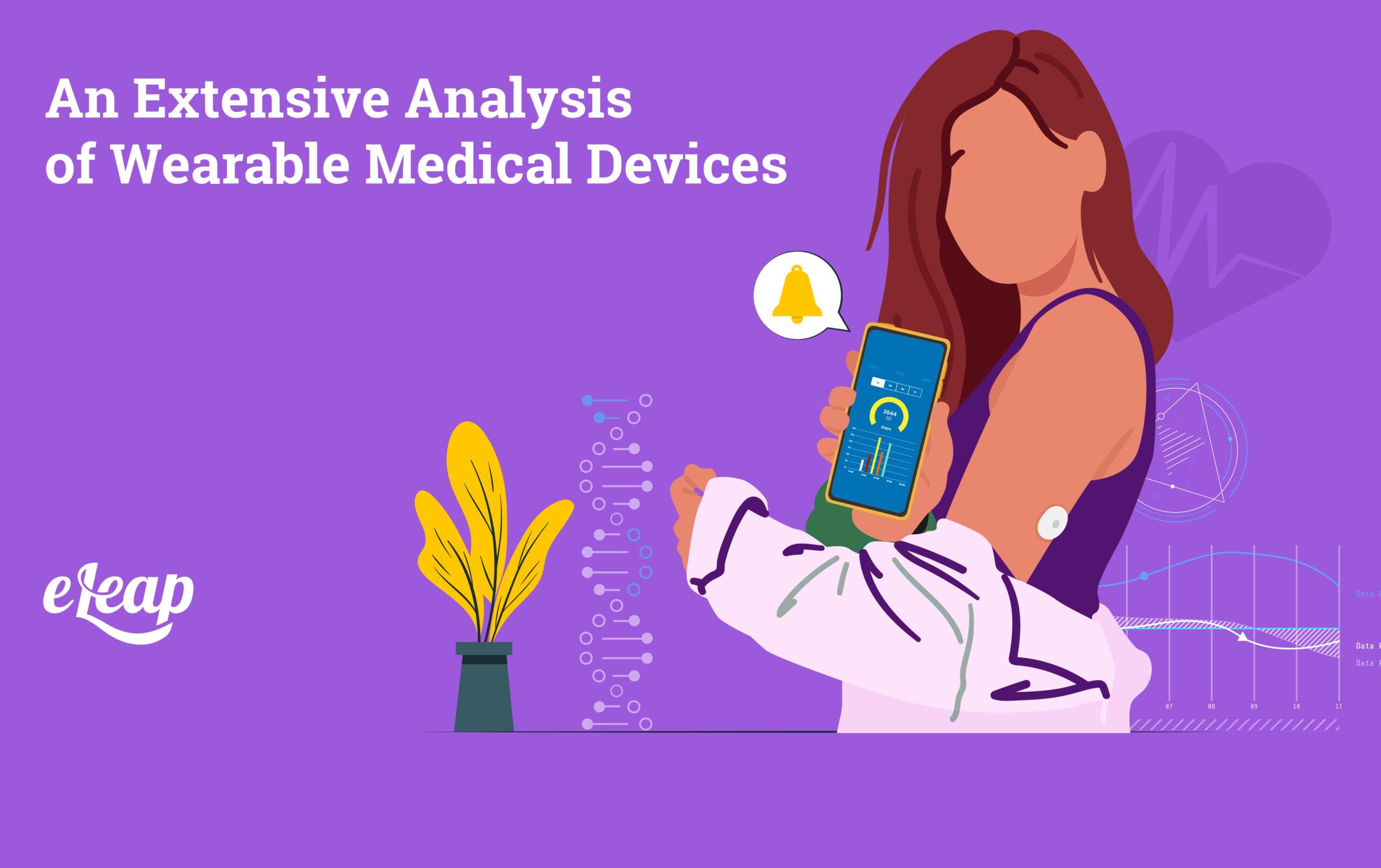An Extensive Analysis of Wearable Medical Devices

Wearable Medical Devices have become a game-changer, allowing people to monitor and control their fitness by bridging the gap between healthcare technology. In this detailed analysis, we go into the realm of wearable medical devices, looking at their significance, essential features, and hands-on applications that highlight how they affect health and well-being.
Understanding the Definition and Development of Wearable Medical Devices
Describing Wearable Medical Equipment: Electronic devices made to be worn on the body, known as wearable medical devices, give real-time health monitoring, data collection, and analysis to help people manage their medical conditions.
Healthcare Wearables’ Evolution: There has been a paradigm shift in the development of wearable technology, which now has a wide range of medical uses beyond fitness followers. These days, managing prolonged diseases, assessing individual health, and providing preventive healthcare all heavily rely on wearable medical technology.
- Essential Features of Wearable Medical Equipment
- Constant Observation
Heart Rate Monitoring: Heart rate patterns can be pursued by users of wearable devices with heart rate devices, which provide constant monitoring while the wearer is at rest or engaging in different activities.
Blood Pressure Monitoring: By assimilating blood pressure monitoring features, more innovative wearables can give users valuable information about their cardiovascular health.
Monitoring of Activities
Step Counting: Simple activity tracking apparatuses like step counting encourage users to move more and assist them in setting and attaining fitness objectives.
Caloric Expenditure: Wearables with classy sensors can calculate burned calories, helping users balance their diet and physical activity.
Measurements of Health Parameters
Blood Glucose Monitoring: Wearable can offer minimally invasive or non-invasive blood glucose checking for people with diabetes, eliminating the need for more predictable techniques like finger-prick tests.
Temperature Monitoring: Constant temperature monitoring is made probable by wearable thermometers, which are beneficial for monitoring fever and possible sickness symptoms.
Examples of Wearable Medical Devices in the Real World

Example1: Systems for Uninterrupted Glucose Monitoring (CGM)
The care of diabetes is modernized by Continuous Glucose Monitoring (CGM) devices, such as those delivered by businesses such as Abbott and Dexcom. These devices provide users and healthcare professionals access to actual data by continuously measuring the glucose levels in interstitial fluid. CGM devices improve diabetes control by enabling prompt modifications to insulin amounts and lifestyle decisions.
Example 2: Smartwatches that monitor ECG
People can count their cardiac beats with smartwatches with electrocardiogram (ECG) monitoring abilities. Such as the Samsung Galaxy Watch 4 and Apple Watch Series 7. This wearable can find anomalies, which may help in the initial detection of heart-related conditions such as atrial fibrillation.
Example 3: Health-insight Wearable Fitness Trackers
Wearable fitness trackers that do more than count steps are obtainable from companies like Fitbit. These devices measure SpO2, track sleep, and monitor stress, giving users comprehensive health information. For example, sleep tracking enables individuals to understand their sleep patterns better and modify their lifestyle to get more rest.
Increasing Patient Involvement
Active Health Management: Wearable Medical Devices allow people to look after their health actively. Proactive health decisions are encouraged, and a sense of control is fostered by real-time data visibility.
Chronic Disease Management: Wearable equipment allows for continuous checking of patients with chronic conditions such as hypertension or diabetes. This permits for personalized disease control and early intervention.
Enabling Telemedicine Patient Monitoring
Wearable medical devices are helping expand the availability of remote patient monitoring services in healthcare. Healthcare providers can remotely monitor patients’ vital signs and health metrics to improve care delivery outside typical healthcare facilities.
Postoperative Monitoring: Wearable Medical Devices have a place in postoperative care since they enable medical staff to monitor patients’ recovery remotely and identify any issues early on.
Obstacles and Things to Think About
Sensitive to privacy and data security Health Data: Data security and privacy are concerns from collecting sensitive health data. To protect user information, manufacturers and healthcare workers must have reasonable security measures.
Compliance with Regulations: To guarantee the dependability and accuracy of health-related data, wearable medical devices must abide by regulatory requirements. Adherence to guidelines and standards is essential for user safety and trust.
Adoption and Engagement of Users
User Compliance: People regularly wear and utilize wearable medical devices to get the most out of them. It can be challenging to promote long-term user compliance; features and designs that are easy to use are necessary.
Health Literacy: Some users need help to evaluate the data that wearables provide appropriately. Health literacy must be addressed to guarantee that users comprehend and act upon the information they receive.
Future Trends and Innovations
Personalized Health Insights: Wearable Medical Devices can offer greater personalization in health insights thanks to the combination of artificial intelligence (AI) and machine learning. These gadgets can provide personalized recommendations by analyzing user behavior and health data.
Early Disease Detection: By spotting minute patterns in health data that could point to the beginning of specific disorders, AI-driven wearables can diagnose diseases early on.
Advanced Sensing Technologies
Non-Invasive Monitoring: Constant improvements in sensor technology allow non-invasive monitoring of many health constraints. Eliminating the need for disturbing procedures and boosting user comfort.
Multifunctional Wearables: In the future, wearable medical devices combine several functions into one unit, combining communication, health tracking, and other features for a smooth user experience.
In summary
In summary, wearable medical devices have become vital to technology and healthcare. Real-life examples demonstrate their impact on chronic illness management, preventive healthcare, and remote patient monitoring. While limitations persist, ongoing breakthroughs and advancements, like the integration of AI and non-invasive monitoring, promise to substantially expand the capabilities of wearable medical devices. There are a lot of exciting opportunities ahead for better patient outcomes. And individualized health insights as these devices continue to revolutionize healthcare delivery.